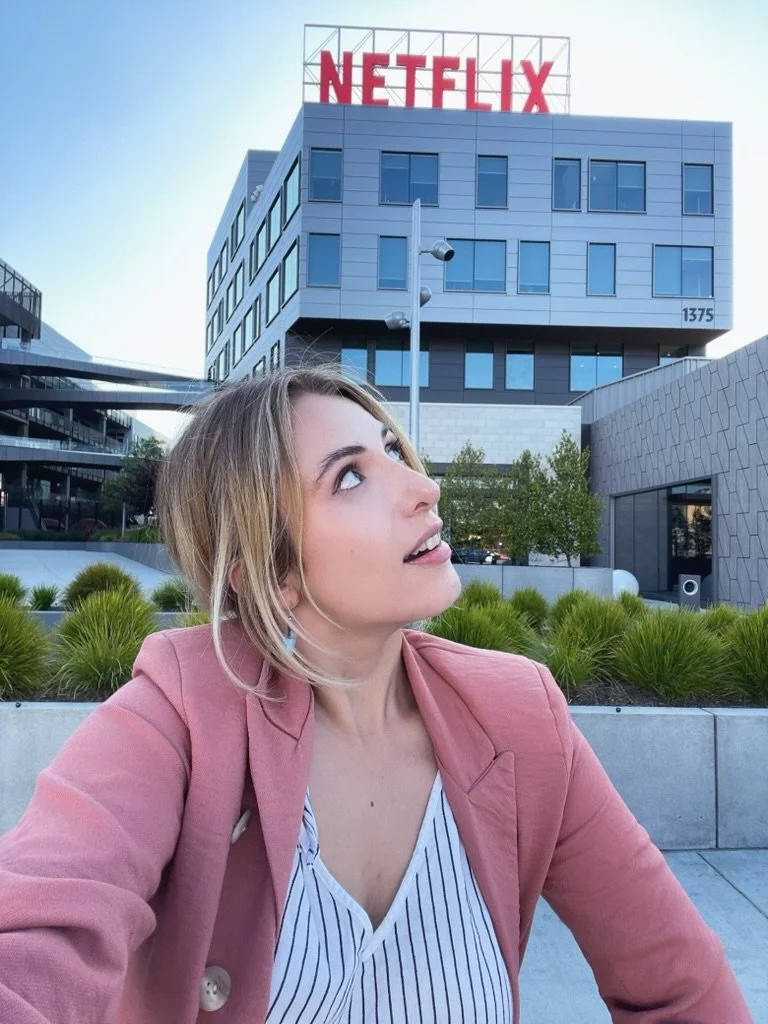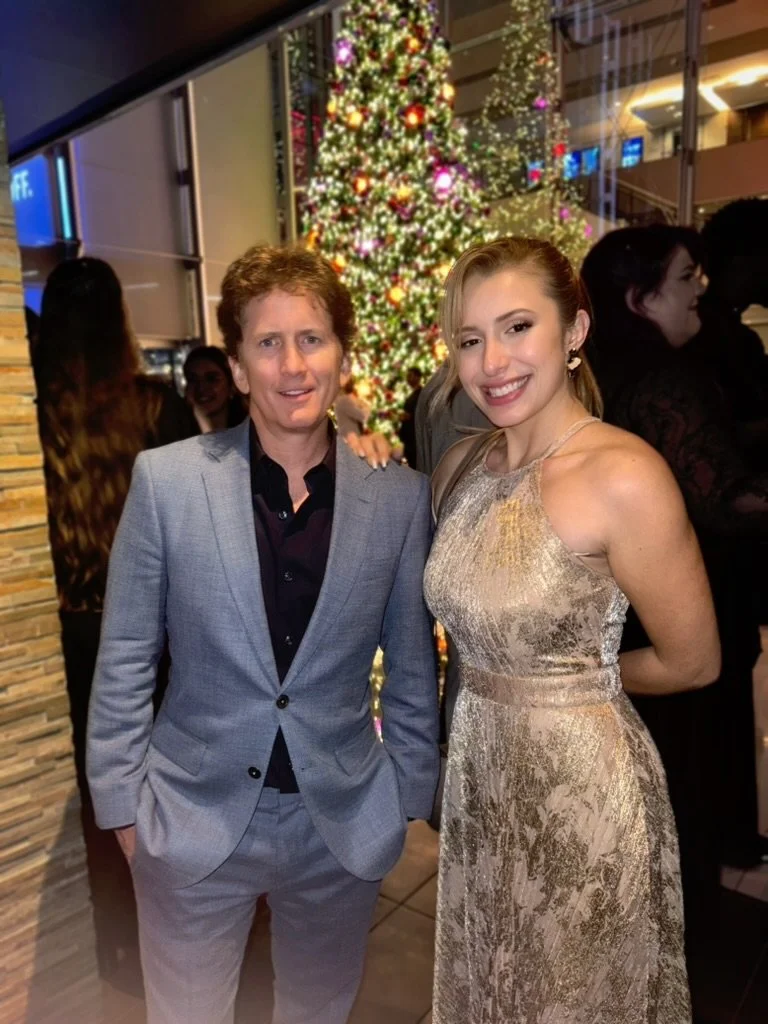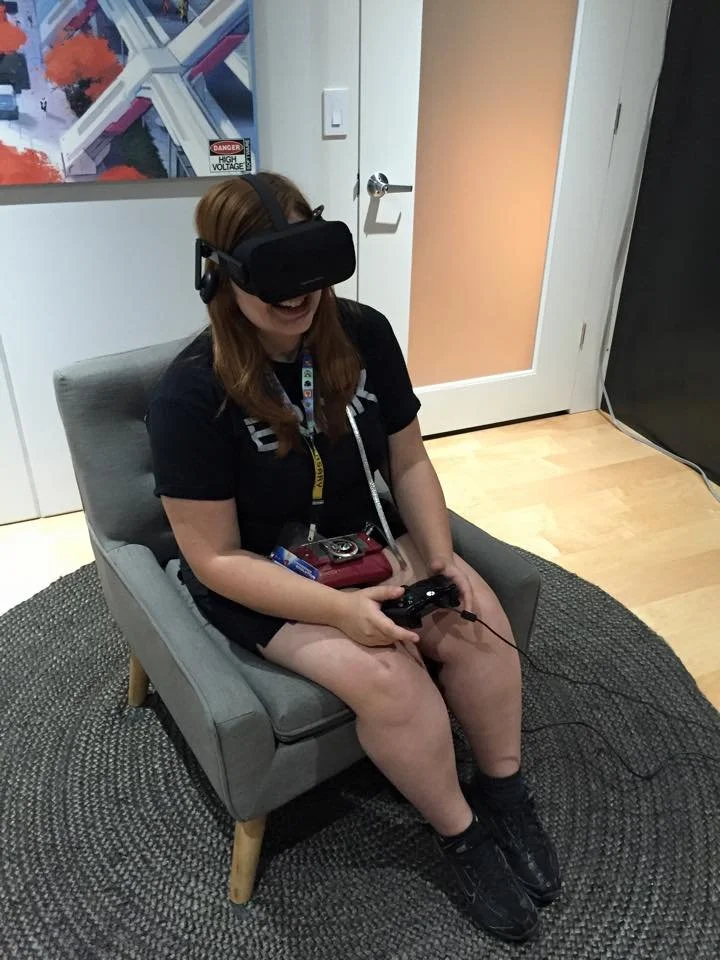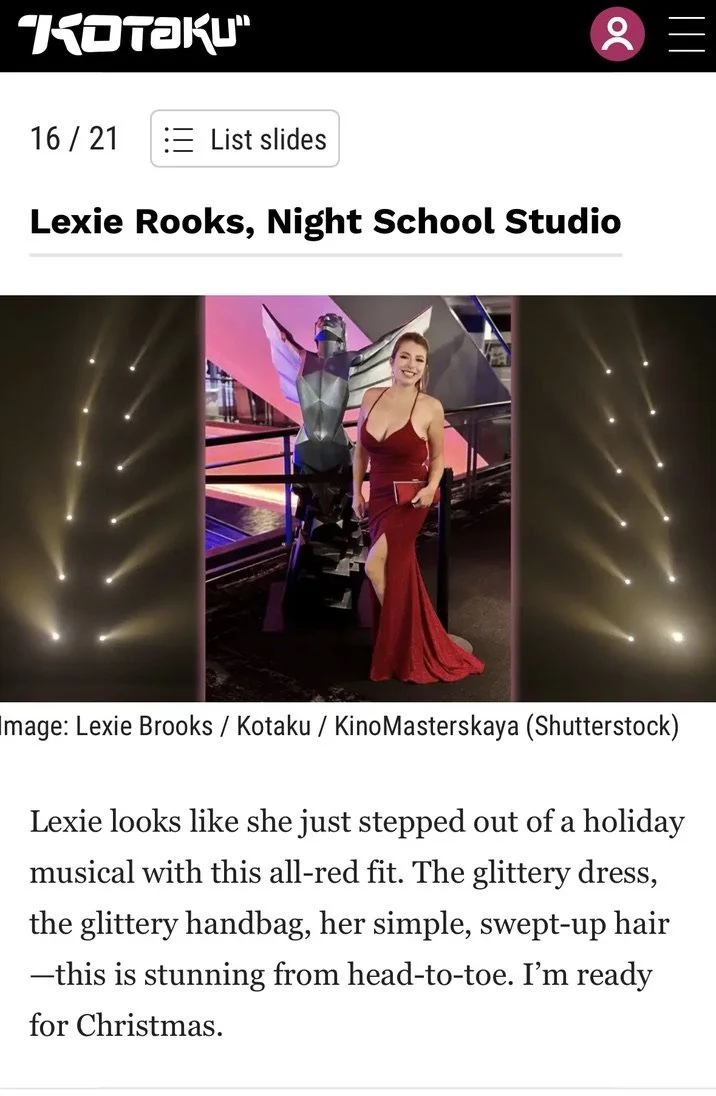A Legend of Lost Signals: An Interview with Lexie Rooks
Lexie’s first day at Netflix in 2022
One of the most fascinating things about video games as an artistic medium is their ability to combine separate creative disciplines and stitch them seamlessly (and coherently) together. The same can be said for film, of course; but games have one major element that movies don’t–interactivity. In this maelstrom of sound, control, graphics, dialogue, and yellow paint it’s usually up to the level designer to act as an invisible guide and storyteller.
They make suggestions about the player’s next action–but gently.
They hold the player’s hand–but not too tight.
Lexie Rooks is a veteran of the craft and she was kind enough to answer my questions about what goes on behind the scenes when building our virtual homes away from home.
Lexie with her first boss in the game industry, Todd Howard, at the 2024 Game Awards
For readers discovering you for the first time, who are you, what do you do, and what are some projects you’ve worked on?
I’m Lexie Rooks, a game designer who loves to deliver immersive, cinematic story experiences. I’ve worked on Fallout 4, Harry Potter: Hogwarts Mystery, and Oxenfree II. I’m known for wearing iconic outfits to game events and telling silly little jokes.
Can you remember a specific moment or game that made you want to pursue a career in the industry?
I’d just turned 18 and was trying to figure out what I wanted to do with my life. I had spent the last 6 years dreaming of being a film director, with uploading shorts to a YouTube channel, landing a videographer internship, and completing a technical training program at a trade school. But for reasons beyond me, I started falling out of love with creating films.
Then BioShock Infinite came out. Every second of that game inspired me, but I’ll always remember the night when I finished it. It was 2am, I was sitting criss-cross-applesauce on the floor of my mom’s dingy basement, and watched in awe as the grand, shocking, emotional finale to this series I’ve loved so much unfolded. Never before had I experienced what excited me about movies in games like that, and my mind went wild with the possibilities games held for telling stories. I didn’t know I wanted to be a game designer yet, but I knew that I had to make games.
What’s the first step you take when designing a new level?
The first questions I ask are, “What is the purpose of this level? Is it going to be a story-centric moment? Or is this an action scene? Are we learning something about the gameplay here? What are we learning about the story here?”. By asking these questions, we can establish a Goal. The Goal is always the guiding principle for me in a level that all other elements support.
How much playtesting and iteration goes into adventure game style levels? (As opposed to something like a platformer which requires constant game feel and obstacle adjustments).
All levels need feedback, period. There is no right way to play a game, and no designer on earth can foresee every possibility of how someone will play your level. “Game feel” is always an element, even in story games, it just evolves with what information you’re trying to communicate to the player. It’s all the same if a player struggles with enemy placements in a platformer or doesn’t understand what they’re supposed to do next in a story game; something needs to change. Levels are fluids, not solids, and constantly changing shape. Finding what the right formula for a level should be is part of the process.
Netflix allows their games to be played on a variety of platforms (phones, Smart TVs, etc.). When you were making games for them, at what point in the design process did you begin to plan for all these different control methods? How much more difficult does that make building levels?
Because Night School was acquired by Netflix specifically for their platform, this was something considered right off the bat. Like you mentioned, there are a lot of ways people can play Netflix games. It’s important to always consider Who is going to play your games and how. With any sort of cross-platform project, finding elegant solutions to complex problems like varying controls or screen sizes is key. Personally, I find working within constraints a fun creative challenge, so I wouldn’t say it was more difficult to work on these kind of projects. There’s always limitations in games, whether it’s performance or lack of physical controller or working on an existing IP like I did on Harry Potter.
Lexie at E3 2015 trying on the first Oculus headset
Do you feel like you have a signature “thing” in the levels you create? Some element you always try to include?
I’ve always been told that my teammates can tell when a level is a “Lexie” level. Usually it’s because of stupid things that I stub in like if you pick up a hammer, the character goes, “Woah, now this is a hammer.”. But in all sincerity, my knack is for landing story moments, whether it is a stupid joke or a scare or a heartbreaking revelation. I’ve spent my entire life so entrenched in storytelling, that I can break up a story beat and see how we can deliver it in the most impactful way. Comedy and horror are my two strongest genres because both rely heavily on building tension. Whether a monster or a giant pile of rubber ducks lie behind a door, I can make you anxious to open it.
Without spoilers, purely from a level design perspective, what level from the history of video games makes you the most jealous that you didn’t build it? Why?
The simplicity and effectiveness of the looping hallway in P.T. fills me with a jealous rage. It wasn’t even a full game, but a trailer for a game that is now considered one of the best horror games of all time. Who knew that turning right could be so horrifying?
Lexie was included on Kotaku’s 2023 Game Awards best dressed list
You recently posted that you completed writing a full game script last year. What was that process like?
I did! I won’t speak on the project too much here yet, but literally from New Years 2024 to New Years 2025 I wrote a 149 page story script for a game I’m making. It’s funny you ask about the process because there just isn’t a standard when it comes to how games are written. But this game, being a cinematic story game, I landed on using a screenplay format with action lines that also describe gameplay.
For the story itself, I did not start writing chronologically. I didn’t know how I wanted it to start or end when I began writing, so I started on a simpler scene that I had a clearer version of in my mind. When you allow yourself to move forward in a project, even with gaps or questions, the answers come as you discover what the project wants to be.
Writer-directors in the film industry will often include detailed notes for shots and camera movements in their screenplays. Did you include level design insights while writing your script?
This is a great question. Because it’s early in the process, I decided to describe the environments in detail on a visual level, but didn’t commit to any specific camera movements or layouts. I’m an extremely visual person, so I try to keep an open mind about how a level might look until I actually start toying with it in-engine.
The script is the guiding light for the levels, but it can always be updated for discoveries we make in 3D. Like I mentioned before, it’s okay and even encouraged to say “We don’t quite know what this will look like yet”, as opposed to committing early to an idea that very well might not work.
What’s something you wish everyone knew about making video games?
There’s this expectation of what a video game really is, or what makes a game good. But the thing about making games is that, at their core, they’re interactive art. Art for the sake of art has no rules. It doesn’t have to be widely marketable. It doesn’t have to be multiplayer, or open world, or have xyz features in it. It doesn’t need to be replayable. It doesn’t necessarily even need to be playable (if ya crazy). There are so many games that are these things, but players should keep an open mind to the ones that aren’t.
What is a book, movie, game, or album you feel everyone should experience?
This might be a cliche at this point amongst game devs, but I feel that everyone, creative industry or not, could benefit from reading The Creative Act. Not only has it helped me profoundly in my career, it has also inspired me to start painting again as a hobby. There’s so much pressure to be the best when it comes to art, or at least good enough to turn it into a career. The Creative Act reminds us that art is an expression of joy and perspective, with or without financial return.
My boyfriend says Hot Rod is the best movie ever made ever. And he’s never wrong.
I want to thank Lexie again for her thoughtful answers. Make sure to follow her on Bluesky (@khalexie.bsky.social) and LinkedIn (https://www.linkedin.com/in/alexandrarooks/) for future updates. If you’re anything like me, you’ll be keeping your notifications locked and loaded for when she’s ready to reveal more about that mysterious script.
Are you working on a small or strange project? Reach out on our contact page, we’d love to chat!



